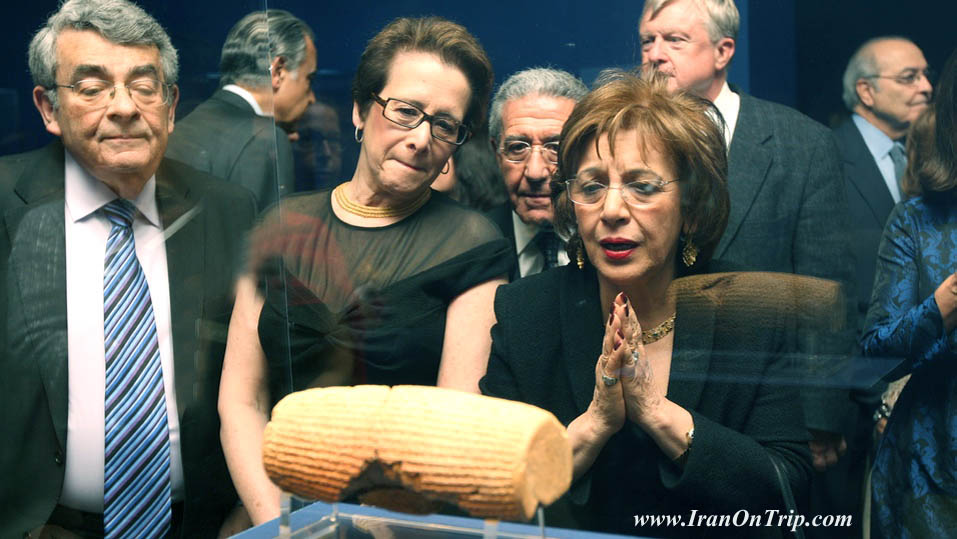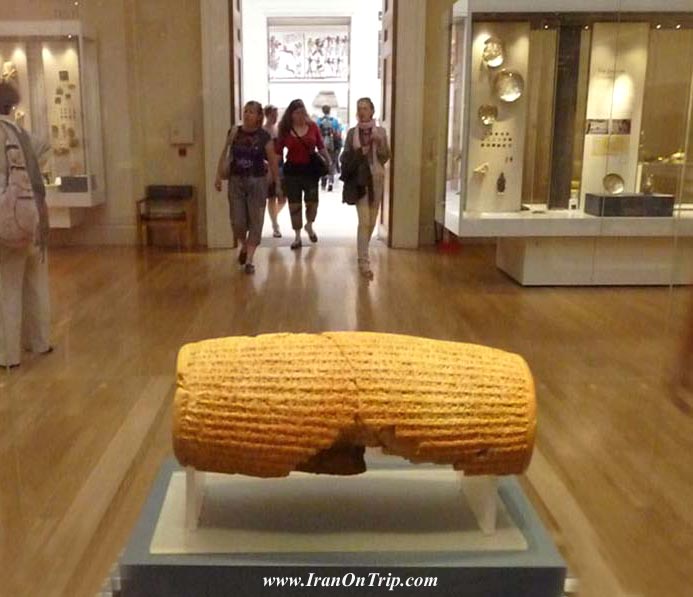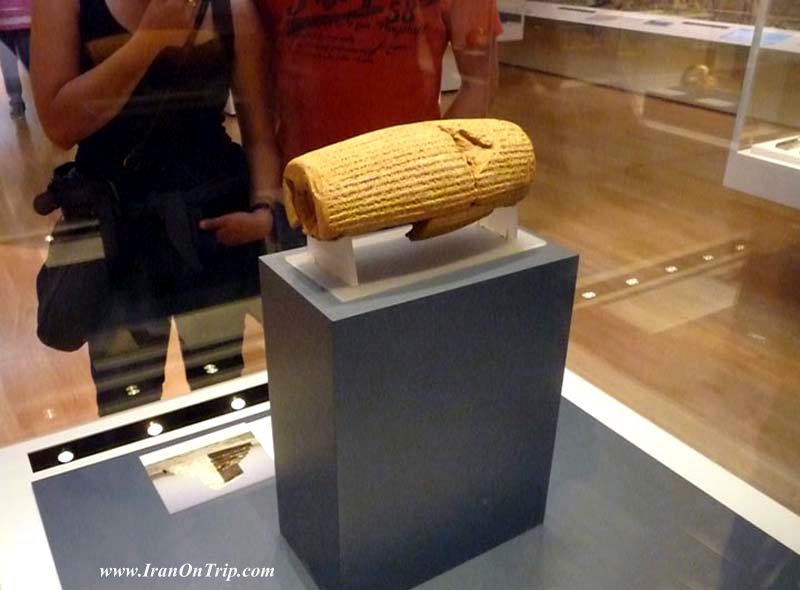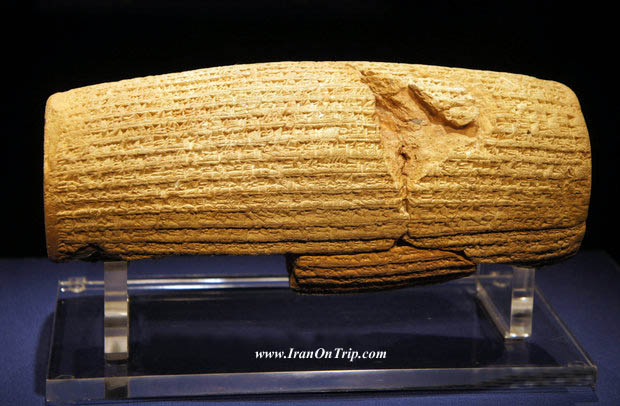Cyrus Cylinder
The Cyrus Cylinder and Ancient Persia
About Cyrus Cylinder
The Cyrus Cylinder is one of the most famous objects to have survived from the ancient world. It was inscribed in Babylonian cuneiform on the orders of Persian King Cyrus the Great (559-530 BC) after he captured Babylon in 539 BC.
The cylinder is often referred to as the first bill of human rights as it appears to encourage freedom of worship throughout the Persian Empire and to allow deported people to return to their homelands. It was found in Babylon in modern Iraq in 1879 during a British Museum excavation.
2500-year-old Persian clay cylinder

In it, Cyrus declares that everyone in the Persian empire is free to worship according to their will, and that all deported people can return to their homeland.
“It is valued around the world as a symbol of tolerance and respect for different peoples and different faiths, so much so that a copy of the cylinder is on display in the United Nations building in New York,” museum director-general Sabyasachi Mukerjee told The Telegraph.
In 539BC, while Cyrus was expanding his kingdom, the Buddha is believed to have begun preaching in India. But India had to wait nearly three centuries to have its own edict of a similar nature, issued by Emperor Ashoka.
“The Cyrus Cylinder may not have a direct link with India but we see similar ideas of peaceful coexistence reflected in Ashoka’s edicts dating back to the third century BC,” Mukerjee said.
The Cyrus Cylinder reflects a long tradition in Mesopotamia where, from as early as the third millennium BC, kings began their reigns with declarations of reforms.
It has been loaned four times — twice to Iran, between October 7 and 22, 1971, in conjunction with the 2,500-year commemorations of the Persian monarchy and again from September to December 2010, once to Spain from March to June 2006, and to the United States for a travelling exhibition from March this year.
There have been campaigns in Iran to bring the cylinder back to its original home.
In 1971, the sister of Iran’s Shah, Mohammad Reza Pahlavi, presented the then United Nations secretary-general, U. Thant, with a replica of the cylinder as a symbol of liberty. Since then, the replica has been on the second-floor hallway at the UN headquarters.
More Information about The Cyrus Cylinder

The Cyrus Cylinder is a Babylonian document of the 6th century BC, discovered in the ruins of Babylon in 1879. It is a clay cylinder, broken into several fragments, on which is written a declaration in Akkadian cuneiform script. The text is in the name of the Achaemenid Persian king Cyrus the Great. The Cyrus Cylinder, issued in 539 B.C. by Cyrus the Great of the Achaemenid Persian Empire (ancient Iran) after his conquest of Babylon, is said by many to be the first human rights document. In 1971, the Cyrus Cylinder was described as the world’s first charter of human rights, and it was translated into all six official U.N. languages. A replica of the cylinder is kept at the United Nations Headquarters in New York City in the second floor hallway, between the Security Council and the Economic and Social Council chambers.
The Cylinder was created following the Persian conquest of Babylon in 539 BC, when the Persian army under Cyrus invaded the Neo-Babylonian Empire and incorporated it into the Persian Empire. The Babylonian king Nabonidus was defeated in battle by the Persians and was deposed by Cyrus, who replaced him as ruler of Babylonia. The text on the Cylinder commemorates the Persian victory and praises Cyrus's kingly virtues, listing his genealogy as a king from a line of kings, in contrast with the low-born Nabonidus. The deposed king is denounced as an impious oppressor of the people of Babylonia. The victorious Cyrus is portrayed as having been chosen by the chief Babylonian god Active ImageMarduk to restore peace and order to the Babylonians. The text says that Cyrus was welcomed by the people of Babylon as their new ruler and entered the city in peace. It appeals to Marduk to protect and to help Cyrus and his son Cambyses. It exalts Cyrus's efforts as a benefactor of the citizens of Babylonia who improved their lives, repatriated displaced peoples and restored temples and cult sanctuaries across Mesopotamia. It concludes with a description of the work of Cyrus in repairing the city wall of Babylon, in which he found a similar inscription by an earlier Babylonian king.

The Assyro-British archaeologist Hormuzd Rassam discovered the Cylinder during an excavation carried out for the British Museum. It had been placed as a foundation deposit in the foundations of the Esagila, the city's main temple. According to the British Museum, the Cylinder reflects a long tradition in Mesopotamia where, from as early as the third millennium BC, kings began their reigns with declarations of reforms. Cyrus's declaration shows how he sought to obtain the loyalty of his Active Imagenew Babylonian subjects by stressing his legitimacy as king, and showing his respect for the religious and political traditions of Babylonia. It has widely been regarded as an instrument of ancient Mesopotamian propaganda, most likely created by the Babylonian priests of Marduk working at the behest of Cyrus.
Passages in the text of cylinder have been interpreted as expressing Cyrus’ respect for humanity, and as promoting a form of religious tolerance and freedom; and as result of his generous and humane policies, Cyrus gained the overwhelming support of his subjects.
The Cyrus Cylinder is not the only reason that the Cyrus legacy is admired. According to Professor Richard Frye:
"In short, the figure of Cyrus has survived throughout history as more than a great man who founded an empire. He became the epitome of the great qualities expected of a ruler in antiquity, and he assumed heroic features as a conqueror who was tolerant and magnanimous as well as brave and daring. His personality as seen by the Greeks influenced them and Alexander the Great, and, as the tradition was transmitted by the Romans, may be considered to influence our thinking even now."
.....
.....
.....

.jpg)




























